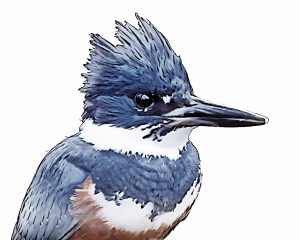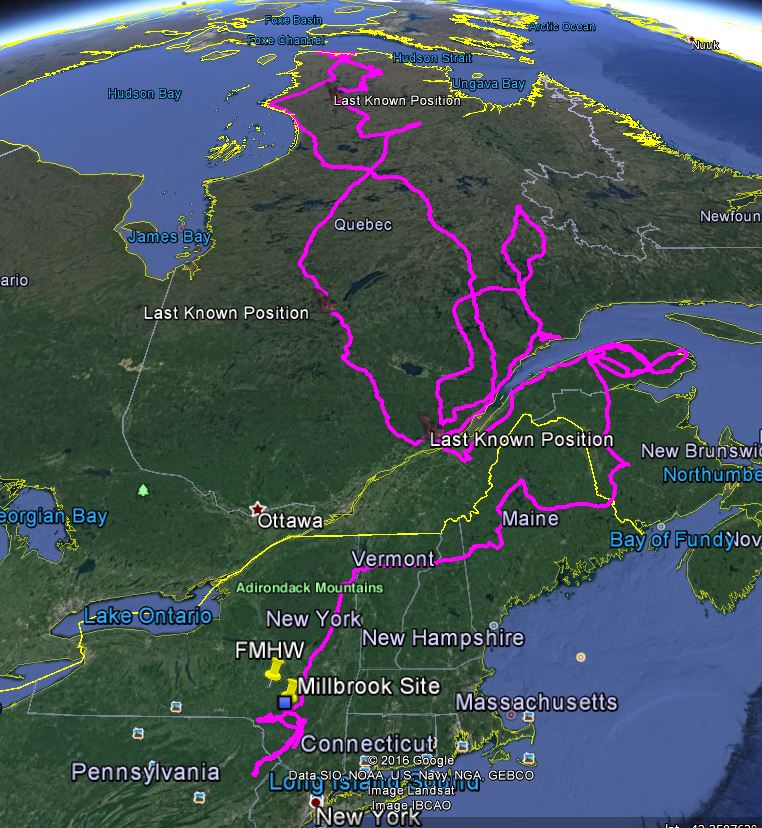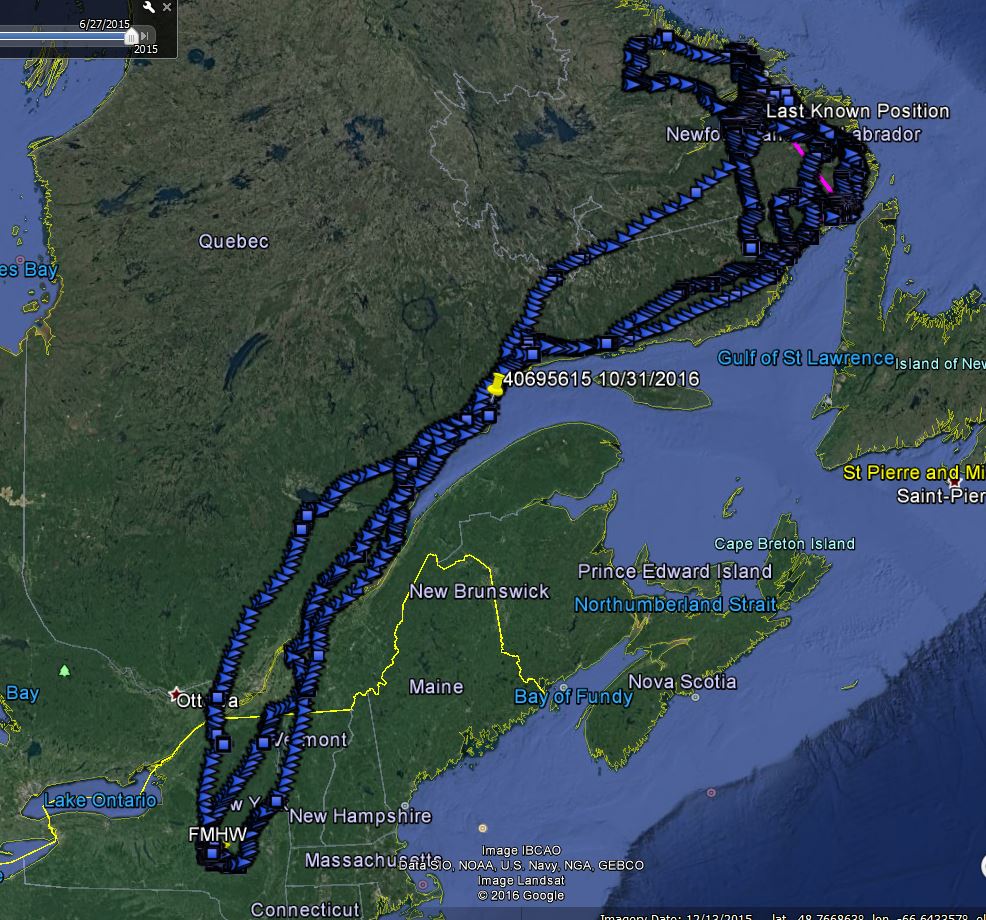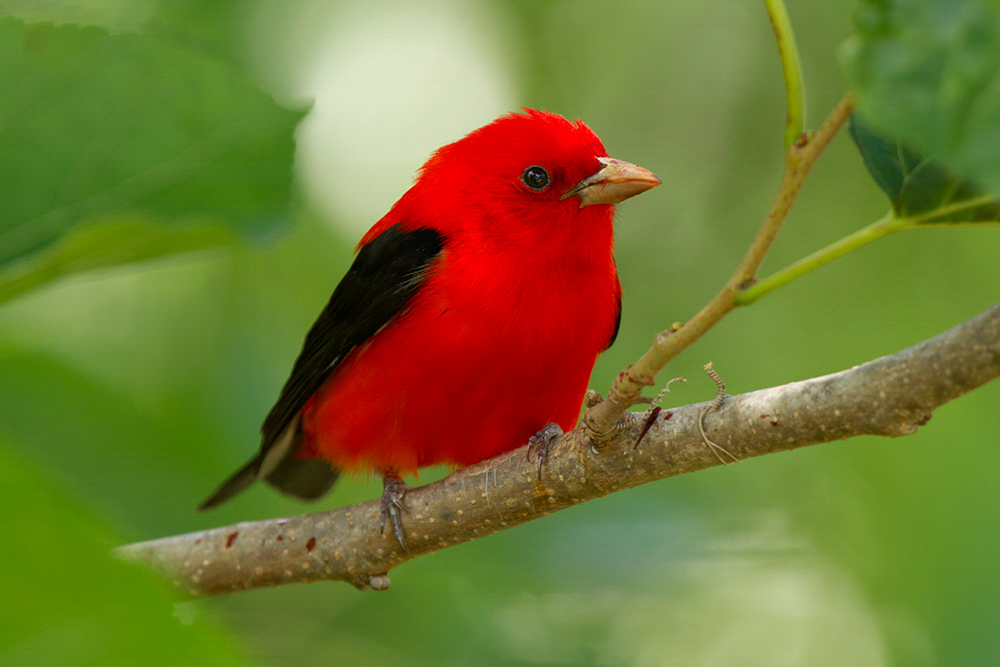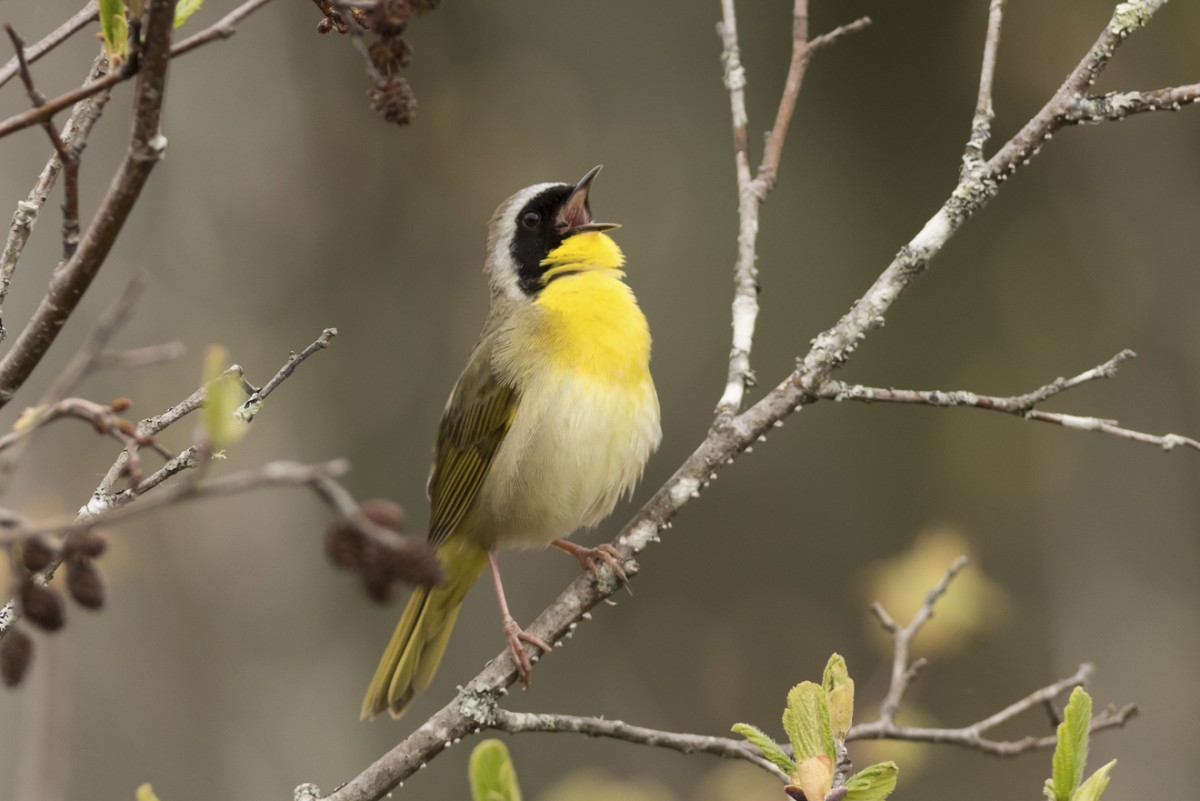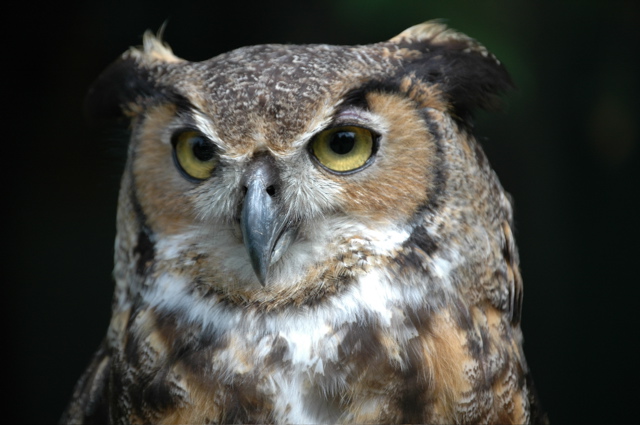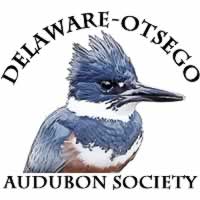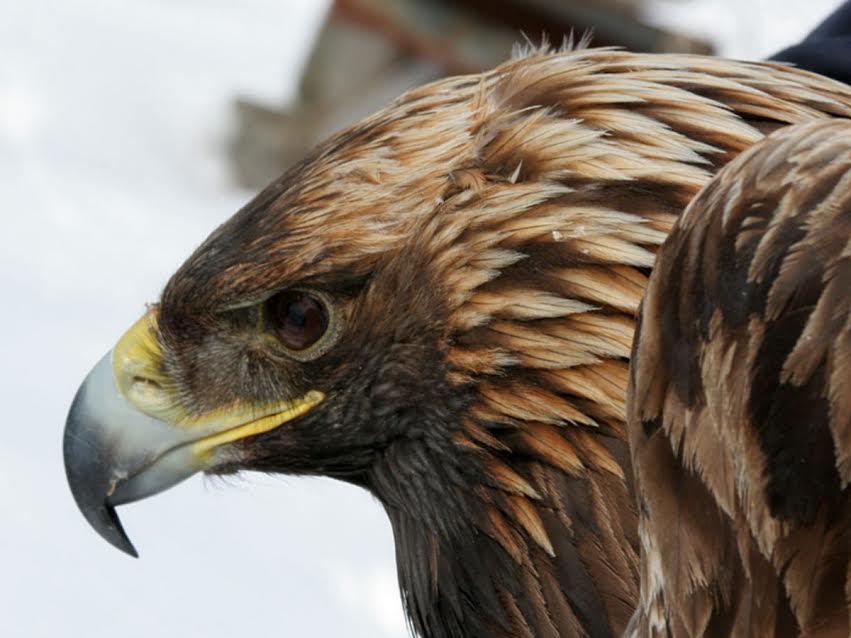
The Franklin Mountain Hawk Watch has become “the” place to see goldens in New York. If you’ve visited the watch on a good day, you’ve seen goldens flying 200 feet off the ground, using the updraft from the ridge to glide its length. This migratory behavior, where birds concentrate along ridges, is typical of Golden Eagles. Unfortunately, it puts the birds in the very same space that developers target for siting their wind power projects. The DOAS Board understands the threats posed by the burning of fossil fuels. We support properly sited wind projects. However, we have grown concerned about impacts to birds and bats. As many as 60,000 wind turbines will be required to reach national energy goals. Many will be built along the ridges of New York and Pennsylvania. Some of those ridges will attract raptors like Franklin Mountain.
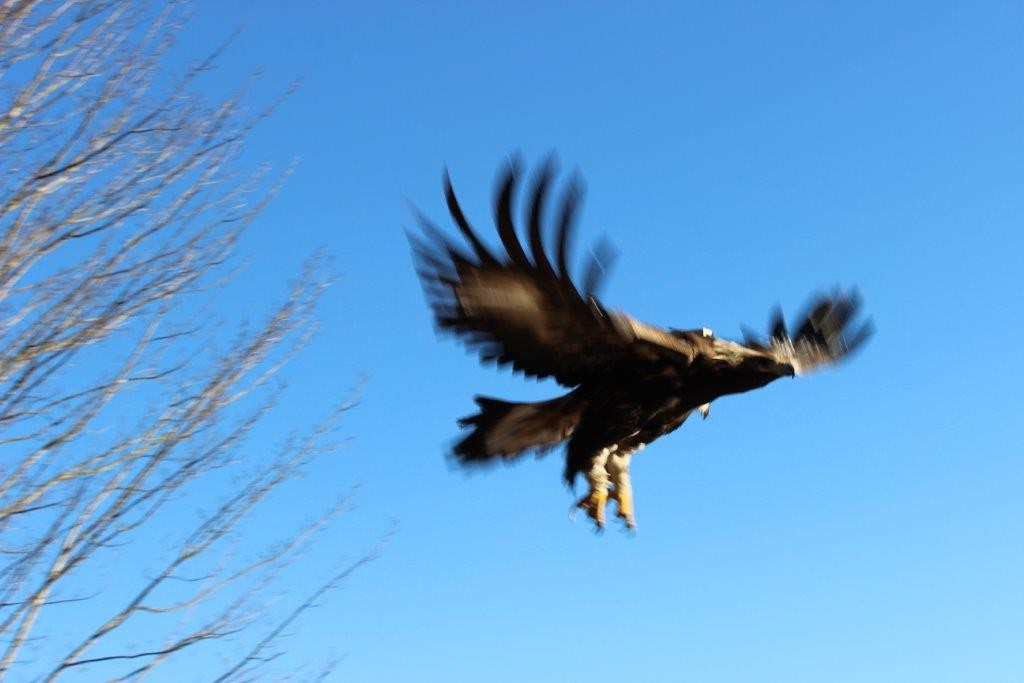
As a species, Golden Eagle is especially vulnerable to wind turbines. It has been called the species which “appears to be at the highest risk”. Knowing that more eastern goldens pass our site than anywhere else this far north, we feel a special responsibility to protect “our” birds. This isn’t easy since away from our site almost nothing is known about how and where they migrate and forage in New York. To learn more about this NYS Endangered Species so they can be protected, we have joined with scientists studying Golden Eagles in the central Appalachians to expand their ongoing studies of winter ranges and migration routes into New York.
Using a wealth of data on the locations and movements of Golden Eagles that were trapped and fitted with transmitters, and the help of Golden Eagle researchers Todd Katzner and Trish Miller, we identified areas in New York to target for this research.
WHY DO WE FOCUS ON GOLDEN EAGLES?
Eastern Golden Eagles are a small, isolated population, which puts them at risk. DOAS has been active in raptor research efforts since 1989 when the organization established the Franklin Mountain Hawkwatch at the DOAS Sanctuary. Franklin Mountain has since become known as the most important fall concentration point for Golden Eagles in New York. DOAS research efforts have also shown our region to be winter habitat and an important spring concentration area.
FRANKLIN MOUNTAIN HAWKWATCH ESTABLISHED 1989
The Franklin Mountain Hawkwatch, located on the Delaware-Otsego Audubon Society Sanctuary overlooking Oneonta, NY, is particularly noted for late fall season flights of Red-tailed Hawks and Golden Eagles. Franklin Mt. provides a panoramic view of the Susquehanna River valley and surrounding hills of Otsego and Delaware Counties.
In the early 1990s DOAS realized high numbers of the species concentrated at FMHW. At the time, little was known about the eastern continental population. Numbers were so high for a rare species that questions were raised about the accuracy of the sightings in the early days.
The site averages now about 130 Golden Eagles each fall season, with some remarkable one day counts. Information on the watch can be found at HAWKCOUNT and FRANKLIN MOUNTAIN HAWKWATCH
WHAT HAVE WE BEEN DOING BEYOND FRANKLIN MOUNTAIN?
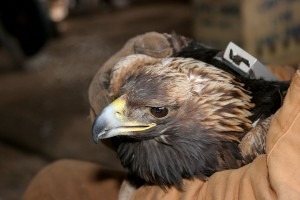
- We have conducted focused spring migration counts at locations identified by GPS telemetry in Delaware and Otsego Counties. These locations found large numbers of migrating eagles. Reports are included at https://doas.us/research/ /
- We have operated winter camera traps at 24 locations in our region since 2010.
- We are working with a number of scientists and organizations on eagle conservation, including Dr. Todd Katzner, USGS Research Wildlife Biologist and a lead researcher with the Eastern Golden Eagle Working Group, The Hawk Migration Association of North America (HMANA), and the National Audubon Society.
- We provide data and comments for wind projects in our region to help protect this species – which is unusually susceptible to impacts from wind turbines.
- We conduct public education on Golden Eagles in New York, addressing conservation concerns and threats such as wind power and lead poisoning.
RESEARCHING SPRING MIGRATORY PATHS
In 2007, DOAS contacted biologist Todd Katzner who had begun GPS tracking eastern Golden Eagles. DOAS donated the cost of a tracking device to this project. Since that time, we have been involved with Dr. Katzner and other eagle biologists in several conservation and research efforts.
In June 2008 Andy Mason and Tom Salo traveled to southwest Pennsylvania to collaborate with Golden Eagle expert Trish Miller to examine eagle flight paths to identifying possible spring concentration areas in our region. The goal was to locate count sites.
A 9-day survey conducted south of the Cannonsville Reservoir in March 2009 found high numbers of migrating eagles. 31 Golden and 66 Bald Eagles were counted. 3 unidentified eagles brought the total to 100. These are higher numbers of Golden Eagle than what were recorded at other sites this far north. The number of Bald Eagles is much higher than expected and we know of no other count sites in the northeast where they are found in such concentration.
It appears that this location in Delaware County is a significant corridor for migrating eagles in spring.
A week long spring raptor survey, conducted on 3 site transect in eastern Otsego County in March 2010, found significant numbers of both Golden and Bald Eagles, 46 and 22 respectively. Additional counting at Davis State Park both before and after the planned week found many more Golden and Bald Eagles moving north around the Cherry Valley. When counting ended at Davis State Park on 2 April, 54 Golden and 28 Bald Eagles had been counted at that site alone.
RESEARCHING WINTER GOLDEN EAGLE RESIDENCE
CAMERA TRAPPING IN NEW YORK
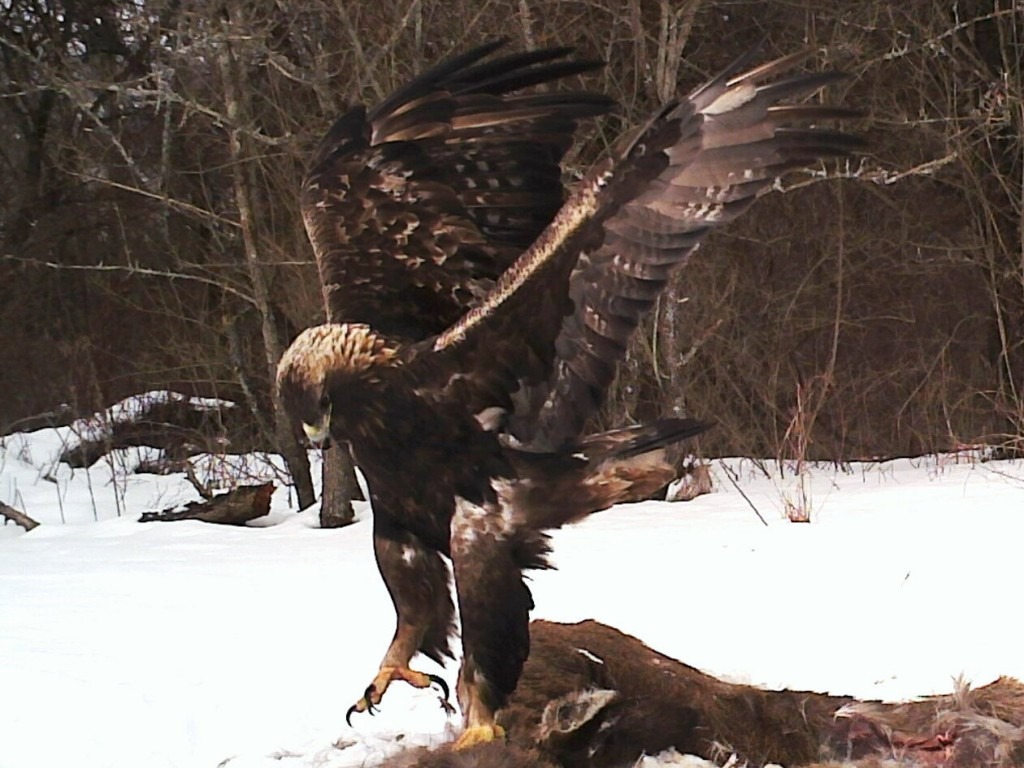
The Appalachian Eagle Project (appalachianeagles.org) was started as an effort to determine the distribution and demographics of eastern Golden Eagles in winter. The success of the project at attracting a large variety of scavenging species expanded the project’s goals.
New York has an abundance of rarely seen yet ecologically important wildlife. Predator ecology, behavior and biology are poorly known in this region. Camera trapping at carcass bait sites generates prolific photographic records of scavenging wildlife. It is an effective tool to assess relative density, habitat use and distributions of scavengers throughout the region. As part of this larger camera trapping program in eastern North America , 45 sites operated in New York during winter from 2010 to 2019. 24 of those sites were operated by DOAS volunteers under a license from NYSDEC. Sites were baited predominantly with road-kill deer, although other species of bait were sometimes used. Data collected in these studies is being analyzed for use for assessing relative density and distribution of the wildlife that were photographed.
The map below shows camera trap locations and quantify the number of individual Golden Eagles observed at each site. Further data analysis will address other species and the persistence of each species at sites.
We wish to acknowledge the hundreds of person-hours of effort that scores of volunteers have provided to this research effort. Camera trapping is not for the faint of heart and we welcome the effort these good people have provided.
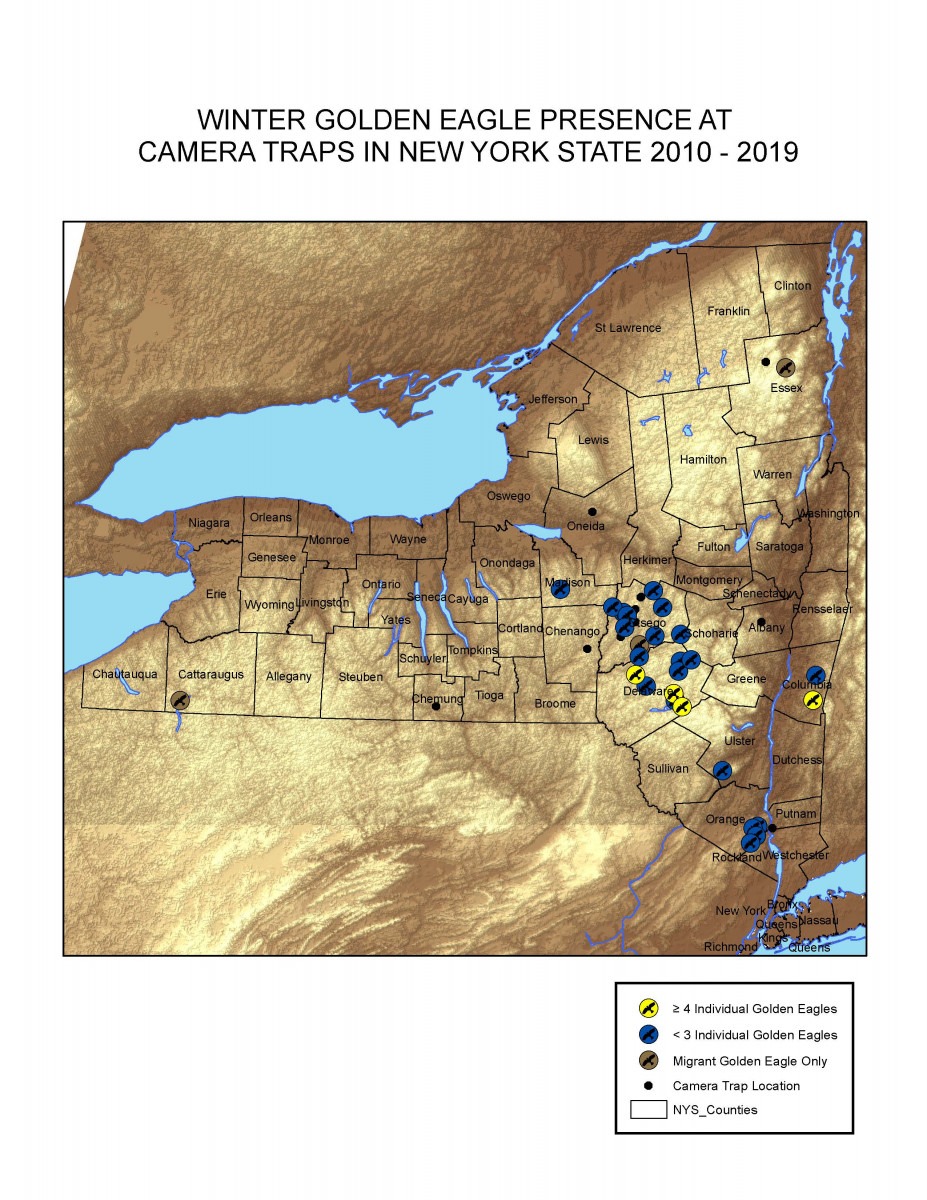
GPS TRACKING GOLDEN EAGLES
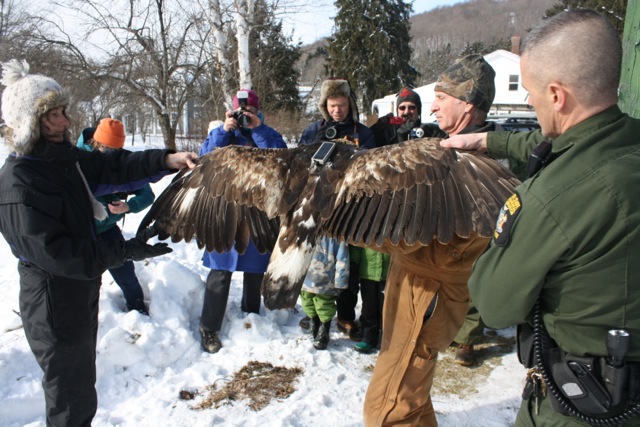
The DOAS Golden Eagle Tracking Project trapped and tagged 8 Golden Eagles with GPS tracking devices from 2014 to 2017. Data from these birds provide accurate information regarding winter habitat and migratory routes used by this rare NYS Endangered Species. These data are helpful for siting of wind energy infrastructure, and raise awareness about our region’s importance as winter habitat and a migratory concentration area. Collecting GPS data every 15 minutes allows us to identify important habitats used by eastern golden eagles.
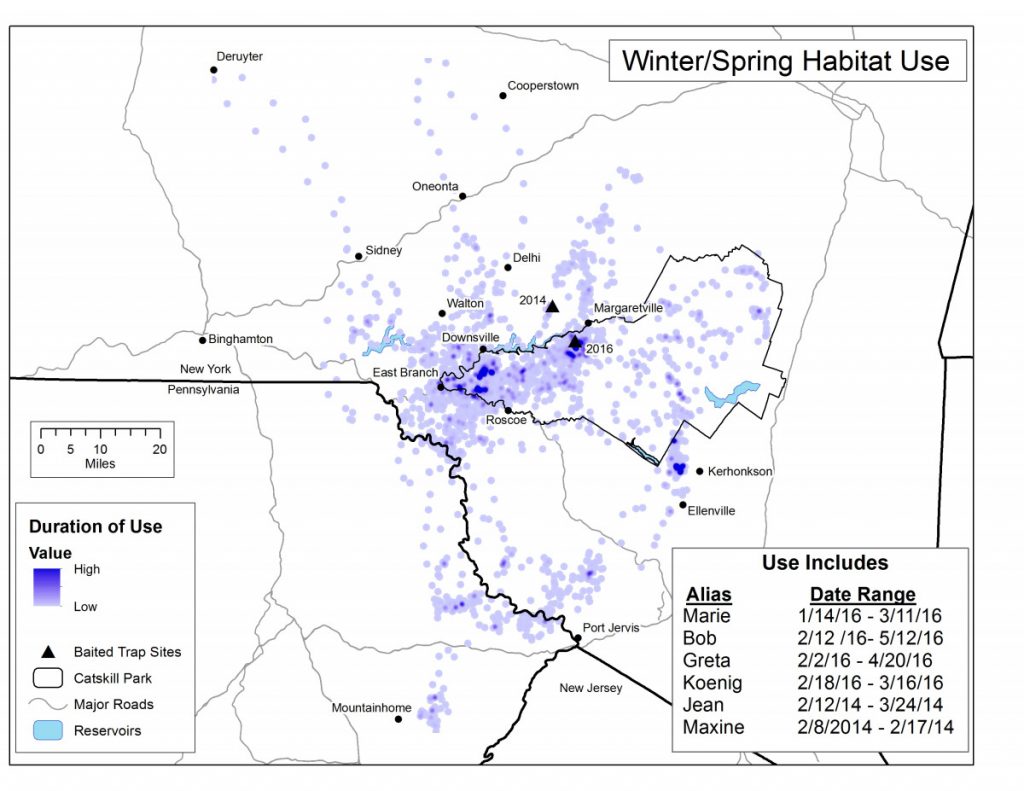
The project launched in the winter of 2014 with the successful tagging of three golden eagles. One bird stopped transmitting locations after 10 days. The unit was connecting but apparently could not acquire 3 satellites for a GPS location. Crews of volunteers searched the last known location in Delaware County. The bird was not found. However, a short distance from the last reported location, searchers discovered the remains of multiple wild boar carcasses that had been killed with lead ammunition. It came to our attention later that a sick Bald Eagle had been found weeks earlier a mile and a quarter from the disposal site. It died shortly thereafter from extremely high levels of lead in its system. Although the evidence is circumstantial, we believe the our bird fed on carcass remains at this site and became weakened and subsequently died as a result of lead poisoning. Immediate steps were taken to assure that government agencies involved in wildlife control properly dispose of carcasses to prevent scavenging species from feeding on the remains.
Because of this outcome, it was determined that inclusion and promotion of the use of non-lead ammunition should be an important part of our outreach efforts on the dangers of lead ammunition.
GOLDEN EAGLE CONSERVATION
RESEARCH TO ACTION
Our work with Golden Eagles throughout the last decade has pushed our organization into greater, in-depth, conservation work. The research and data provides a foundation for next steps, which includes meaningful Education and Advocacy.
PREVENTING LEAD POISONING IN EAGLES
Learn More about our Non-Lead Ammunition Work here.
